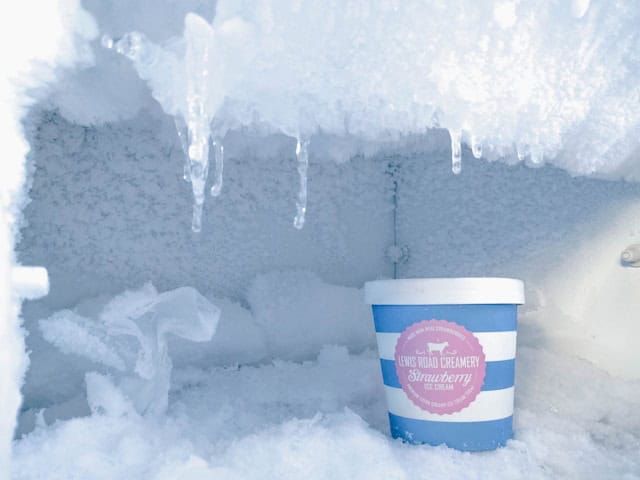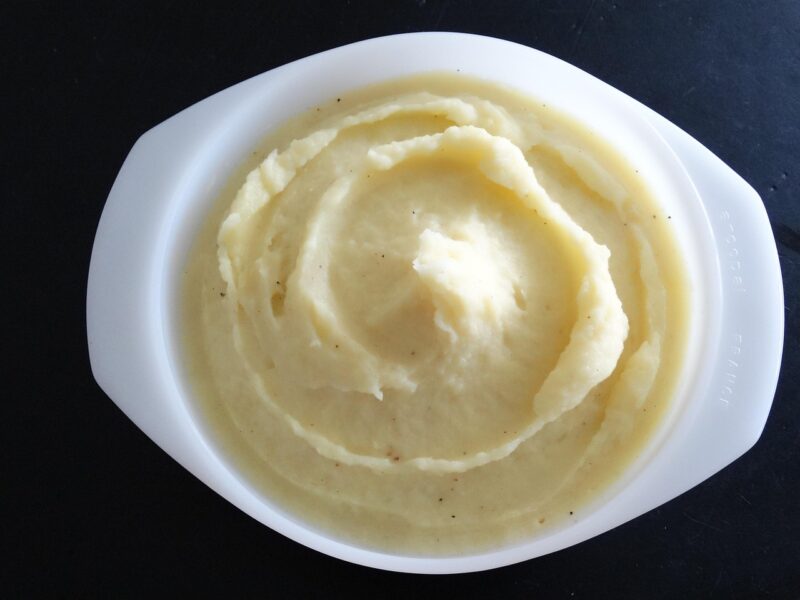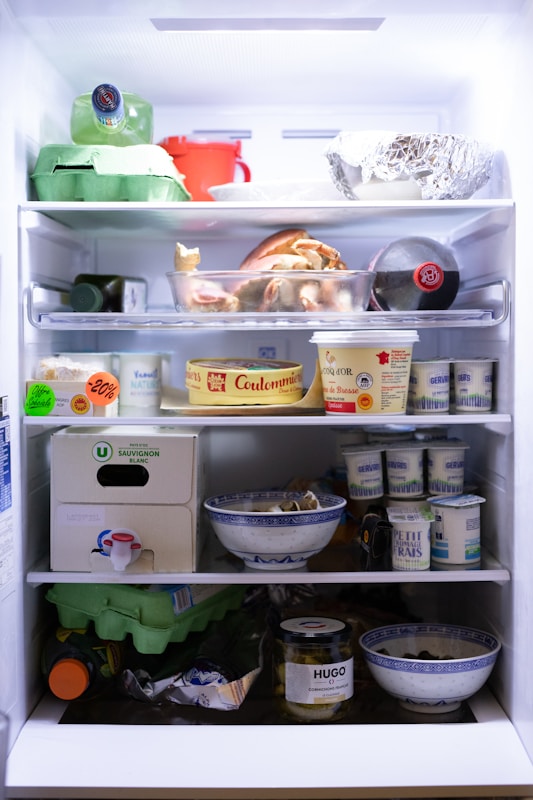This comprehensive guide explores not only the nuances of freezing mashed potatoes but also the techniques, benefits, and some fun facts that go hand in hand with this beloved dish.
The Basics of Freezing Mashed Potatoes
To address the question upfront: yes, you can freeze mashed potatoes. However, doing it correctly is key to preserving their taste and texture. The freezing process can cause changes in the consistency due to the presence of moisture and the starch in potatoes. With the right preparation and storage techniques, you can enjoy homemade mashed potatoes well after they have been initially prepared.
How to Freeze Mashed Potatoes: A Step-by-Step Guide
To achieve the best results when freezing, follow these careful steps:
Choose the Right Potatoes: Start with high-starch potatoes, like Russets or Yukon Golds. These varieties give mashed potatoes their fluffy texture. Avoid waxy potatoes like Red Bliss as they tend to yield a different texture upon freezing.
Cook Your Potatoes: Boil sliced potatoes in salted water until tender. Test for doneness by piercing with a fork; they should easily break apart.
Mash Them Thoroughly: Drain the potatoes well and mash them while they are hot. The moisture content is crucial; you want them creamy and smooth. If desired, add butter, cream, milk, and seasoning to enhance flavor during mashing.
Cool the Mashed Potatoes: Allow them to reach room temperature before freezing. This will help prevent ice crystals from forming.
Portion the Potatoes: Divide the mashed potatoes into meal-sized portions. Using an ice cream scoop or measuring cup can help create consistent servings.
Package for Freezing: Use freezer-safe bags or airtight containers. If using bags, squeeze out as much air as possible before sealing. This will prevent freezer burn.
Label and Date: Don’t forget to label your containers with the date and contents. This will help you keep track of what you have in your freezer.
Freeze: Place your packaged mashed potatoes in the freezer. Mashed potatoes can be stored for up to 3 months without significantly compromising taste or texture.
Thawing and Reheating Frozen Mashed Potatoes
Once you’re ready to enjoy those tasty potatoes, thawing and reheating properly are crucial steps.
Thawing: Ideally, remove the mashed potatoes from the freezer and transfer them to the refrigerator for several hours or overnight. If you’re short on time, you can use the microwave on a low setting or place the container in a warm water bath.
Reheating: Reheat on the stovetop or in the microwave. If reheating on the stove, add a splash of milk or cream to restore creaminess. Stir gently and watch the heat to avoid overheating.
Understanding the Science of Freezing Mashed Potatoes
While the process of freezing may seem straightforward, it involves some interesting science that affects the final product. Potatoes are made up of water and starch, and when they are frozen, water within the cells can form ice crystals. These can disrupt the structure of the potatoes, often leading to a grainy texture when reheated.
To combat this, some cooks add additional fat or cheese to the mashed potatoes before freezing. The fat can help stabilize the structure and improve the final texture and consistency.
The Flavor Factor: What Works Best?
When pondering the essence of mashed potatoes, seasoning and additional ingredients can significantly impact flavor. Including butter, cream, garlic, or cheese not only enhances the taste but also changes how well they freeze.
Cream and Butter Variations
Traditional mashed potatoes often call for butter and cream, which contribute to their creamy texture. Here are popular variations to enhance your frozen mashed potatoes:
Garlic Mashed Potatoes: Roasting garlic before mixing it in adds a depth of flavor. Its sweetness and richness become more pronounced.
Cheesy Mashed Potatoes: Incorporating cheeses such as cheddar or cream cheese creates a unique taste. The protein content helps the texture, making them luxurious even after freezing.
Herbed Variants: Fresh or dried herbs like chives, rosemary, or thyme can elevate the simple potato dish to gourmet levels. Fresh herbs should be added just before freezing to preserve flavor.
The Role of Dairy in Freezing
Dairy products play an essential role in the freezing process. Heavy cream may freeze better than milk due to its higher fat content. On the other hand, lighter dairy options may separate during thawing, which can lead to an undesirable texture.
If you prefer to keep the mashed potatoes lighter, consider freezing them without the dairy, then adding it back during the reheating process. This addition can also aid in smoothness.
Storing Your Mashed Potatoes: Tips and Tricks

Successfully freezing mashed potatoes isn’t just about freezing; it’s about how you store them too. Here are some helpful tips to maintain quality:
Use a Vacuum Sealer: If you’re a frequent freezer user, investing in a vacuum sealer can be beneficial. It removes air effectively, preventing freezer burn.
Flat Freezing: When using bags, laying them flat in the freezer maximizes space and ensures even freezing. Once solid, you can stack them.
Avoiding Freezer Burn: Improper sealing can lead to freezer burn. Ensure all air is removed, and consider double-bagging if you’re concerned.
How Long Can You Keep Them?
While you can store mashed potatoes in the freezer for up to three months for optimal flavor and texture, they can technically last longer. Beyond that time frame, quality will degrade, though they may still be safe to consume. For the best experience, aim for within that three-month window.
Beyond Freezing: Other Storage Methods
While freezing is an excellent option for preserving mashed potatoes, there are other methods worth considering:
Refrigeration: If you have leftover mashed potatoes after a dinner, they can be stored in the fridge for up to five days in an airtight container.
Canning Mashed Potatoes: Although more labor-intensive, canning is another preservation method. Cooled mashed potatoes can be placed in sterilized jars and processed. However, it’s worth noting that the texture may not be the same as with freezing.
Dehydration: A less common method involves drying cooked potatoes. This is not widely practiced for mashed potatoes but can be a fun experiment for the adventurous cook.
Creative Uses for Leftover Mashed Potatoes
Sometimes, it’s not just about freezing; it’s about getting the most from your mashed potatoes. If you have leftovers (frozen or fresh), consider these playful and creative uses:
Potato Pancakes: Mix your mashed potatoes with eggs and flour to form patties, then pan-fry until crispy.
Shepherd’s Pie: Use leftover mashed potatoes as a topping for hearty meat pies.
Soup Thickener: Add a scoop of mashed potatoes to soups or stews for added creaminess and thickness.
Potato Gnocchi: Combine with flour and eggs and shape into pasta for an Italian twist.
The Cultural Significance of Mashed Potatoes
Mashed potatoes are not only a dish but a cultural icon in many countries. In the US, they symbolize comfort and tradition, commonly associated with Thanksgiving dinners alongside turkey and gravy.
In other cultures, variations of mashed potatoes appear, such as the Irish “Colcannon,” which includes cabbage and green onions. This versatility showcases potatoes’ importance in global cuisine.
Celebrating Regional Variants
Colombian “Papas Picanteras”: A creamy twist featuring cheese and butter.
Swedish “Janssons Frestelse”: A casserole with whipped potatoes, cream, and anchovies, showcasing another dimension of mashed potato applications.
Italian “Purè di Patate”: Often served as a side dish with fresh herbs and garlic, they offer a different flavor profile, emphasizing local ingredients.
Conclusion: Making the Most of Your Mashed Potatoes
Whether you’re preparing meals for the week, planning a big holiday feast, or just looking for comfort food on a chilly evening, knowing how to properly freeze mashed potatoes can do wonders.
They offer convenience and the chance to enjoy your culinary creations long after they were initially made. By taking the extra steps to freeze them properly, consider adapting recipes, and even exploring cultural variations, you’ll ensure that your mashed potatoes remain a beloved dish in your home.
So the next time you ask yourself, “can you freeze mashed potatoes?” remember that not only can you do so, but you can also turn them into a canvas for creativity in your cooking adventures. Embrace this delightful side dish and make it a part of your kitchen legacy.









